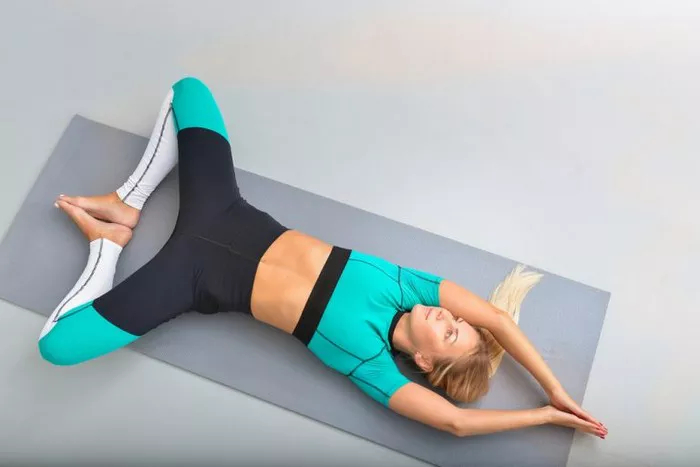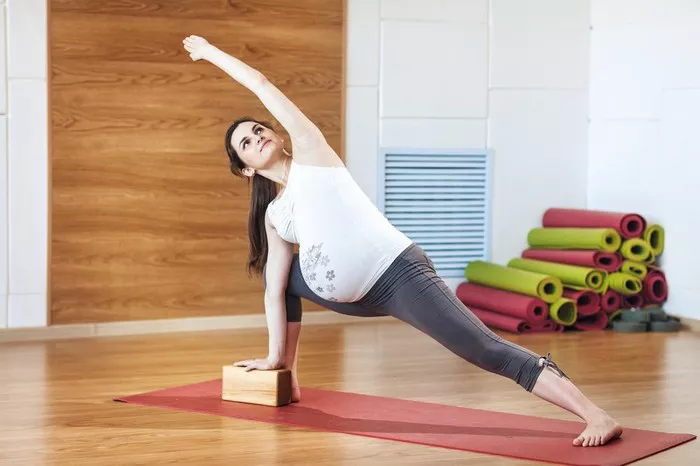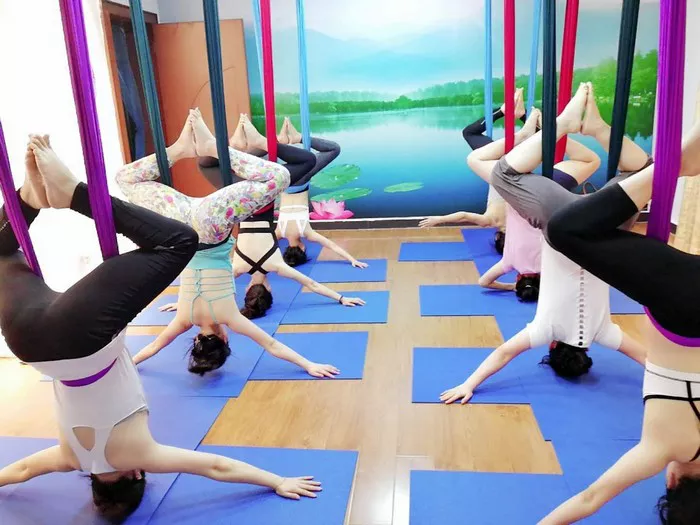Depression is a pervasive mental health condition affecting millions of individuals worldwide. While there are various treatments available, yoga has emerged as a complementary practice that can alleviate symptoms and promote mental well-being. In this article, we delve into eight yoga poses specifically tailored to help manage depression.
1. Child’s Pose (Balasana)
Balasana, commonly known as Child’s Pose, is a gentle yoga pose that promotes relaxation and reduces stress and anxiety. To perform this pose, begin by kneeling on the yoga mat with your big toes touching and knees spread apart. Slowly lower your torso down between your thighs and extend your arms forward, resting your forehead on the mat. Breathe deeply and allow your body to relax, feeling a gentle stretch in your back and hips. Stay in this pose for several breaths, focusing on releasing tension and calming the mind.
2. Cat-Cow Pose (Marjaryasana-Bitilasana)
The Cat-Cow Pose is a dynamic yoga sequence that helps to improve spinal flexibility and release tension in the back and neck. Start on your hands and knees in a tabletop position, with your wrists aligned under your shoulders and knees under your hips. As you inhale, arch your back and lift your tailbone towards the ceiling, allowing your belly to drop towards the floor (Cow Pose). Then, as you exhale, round your spine upwards, tucking your chin towards your chest (Cat Pose). Flow smoothly between these two poses, syncing your movements with your breath. This gentle spinal massage can help to alleviate stress and improve mood.
3. Standing Forward Bend (Uttanasana)
Uttanasana, or Standing Forward Bend, is a calming yoga pose that stretches the entire back of the body, including the spine, hamstrings, and calves. To practice this pose, stand with your feet hip-width apart and slowly fold forward from the hips, keeping your knees slightly bent if necessary. Allow your upper body to hang loose, reaching towards the floor or grasping opposite elbows with your hands. Relax your neck and let your head hang heavy. Focus on releasing tension with each exhalation, feeling a gentle stretch through the back of your legs and spine. Uttanasana can help to relieve anxiety and quiet the mind.
4. Legs-Up-the-Wall Pose (Viparita Karani)
Viparita Karani, also known as Legs-Up-the-Wall Pose, is a restorative yoga pose that promotes relaxation and reduces stress. To practice this pose, sit with one side of your body against a wall and your knees bent. Slowly lower your torso to the floor as you swing your legs up the wall, keeping your hips as close to the wall as possible. Rest your arms by your sides with palms facing up, and close your eyes. Allow your breath to become slow and steady as you relax into the pose. Legs-Up-the-Wall Pose helps to improve circulation and calm the nervous system, making it an excellent choice for managing depression symptoms.
5. Corpse Pose (Savasana)
Savasana, or Corpse Pose, is a final relaxation pose traditionally practiced at the end of a yoga session. Lie on your back with your legs extended and feet hip-width apart, arms relaxed by your sides with palms facing up. Close your eyes and allow your entire body to relax into the mat, releasing any tension or holding in the muscles. Focus on your breath, allowing it to become slow and natural. Stay in Savasana for several minutes, allowing yourself to surrender to the present moment completely. This pose promotes deep relaxation and can help to alleviate symptoms of depression by calming the mind and reducing stress.
6. Seated Forward Bend (Paschimottanasana)
Paschimottanasana, or Seated Forward Bend, is a calming yoga pose that stretches the entire back of the body, from the shoulders to the heels. Sit on the floor with your legs extended in front of you and feet flexed towards your body. Inhale to lengthen your spine, then exhale as you hinge forward from the hips, reaching towards your feet with your hands. Keep your back straight as you fold forward, leading with your chest. If you cannot reach your feet, you can place your hands on your shins or use a yoga strap for support. Relax into the stretch and breathe deeply, allowing your body to release tension with each exhalation. Paschimottanasana helps to calm the mind and relieve symptoms of depression by reducing stress and promoting relaxation.
7. Bridge Pose (Setu Bandhasana)
Setu Bandhasana, or Bridge Pose, is a gentle backbend that helps to open the chest and shoulders while strengthening the back and legs. Lie on your back with your knees bent and feet hip-width apart, arms relaxed by your sides. Press your feet into the mat as you lift your hips towards the ceiling, keeping your knees in line with your ankles. Interlace your fingers beneath your back and press your arms into the mat for support. Lengthen through your spine as you lift your hips higher, opening the front of the body. Hold the pose for several breaths, focusing on the expansion of the chest and the release of tension in the back. Bridge Pose can help to improve mood and reduce symptoms of depression by energizing the body and promoting feelings of vitality.
8. Easy Pose (Sukhasana) with Forward Fold
Sukhasana, or Easy Pose, is a comfortable seated position often used for meditation and pranayama (breath control) practices. Sit cross-legged on the floor with your spine tall and shoulders relaxed. If sitting cross-legged is uncomfortable, you can sit on a cushion or folded blanket for support. Once you are settled in Easy Pose, inhale to lengthen your spine, then exhale as you hinge forward from the hips, folding your torso towards your thighs. Rest your forehead on the floor or a block and allow your arms to relax by your sides. Breathe deeply into your lower back and hips, feeling a gentle stretch through the spine. Hold the forward fold for several breaths, then slowly come back to an upright position. This gentle pose helps to calm the mind and reduce symptoms of depression by promoting relaxation and introspection.
Conclusion
Incorporating these easy yoga poses into your daily routine can provide relief from depression symptoms and promote mental well-being. Remember to listen to your body and practice with awareness and compassion. While yoga can be a valuable tool for managing depression, it is essential to seek professional help if you are experiencing severe or persistent symptoms. With dedication and practice, yoga can be a powerful ally in your journey towards emotional balance and healing.






















